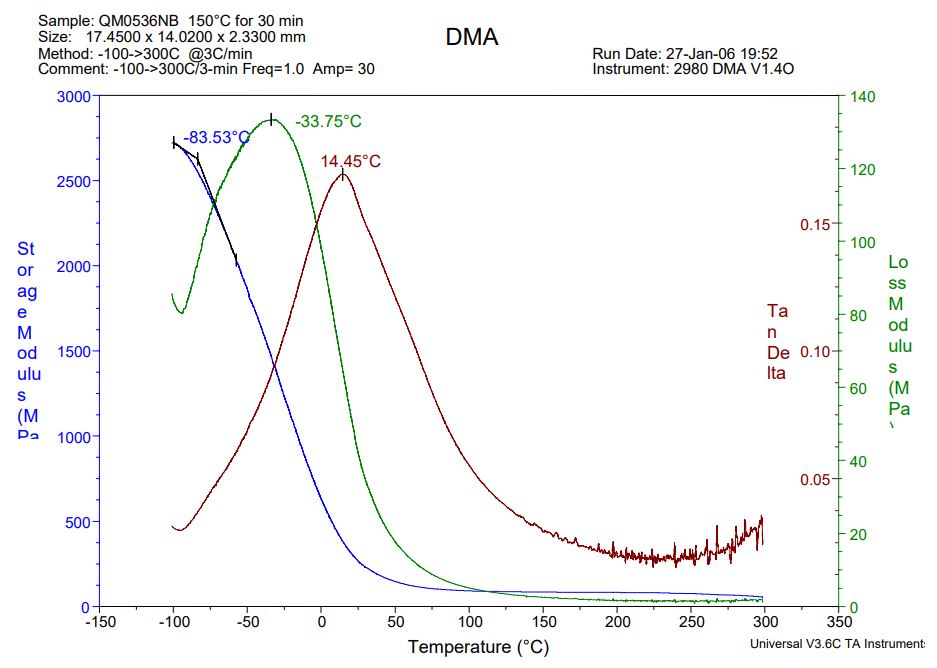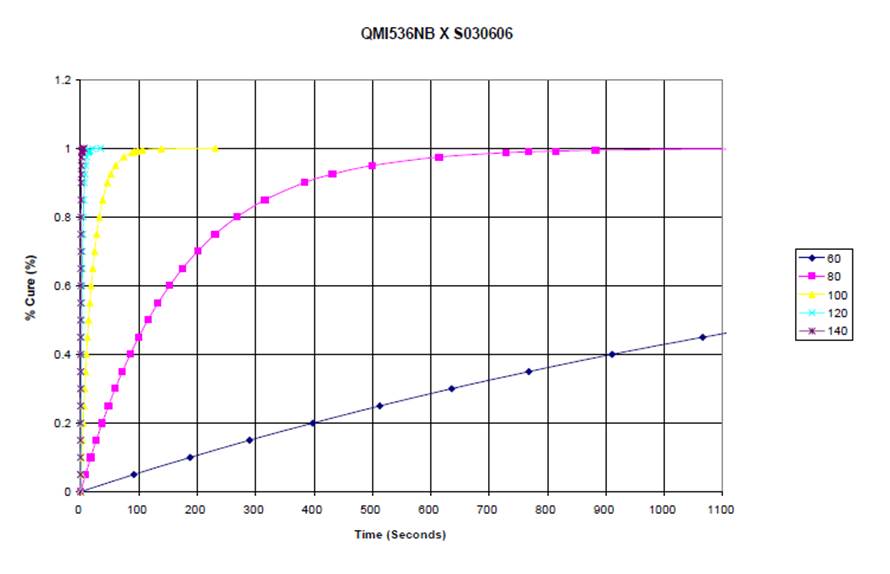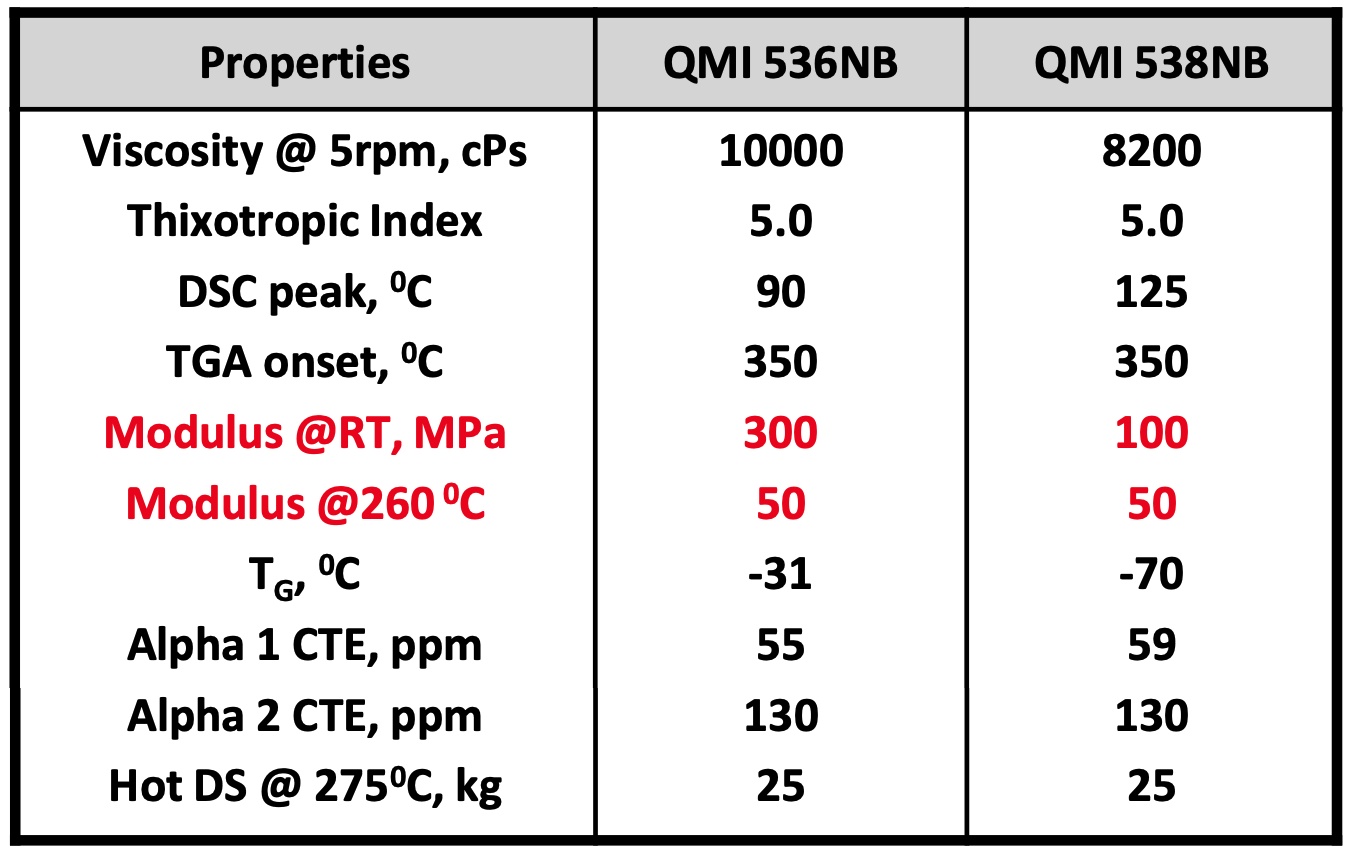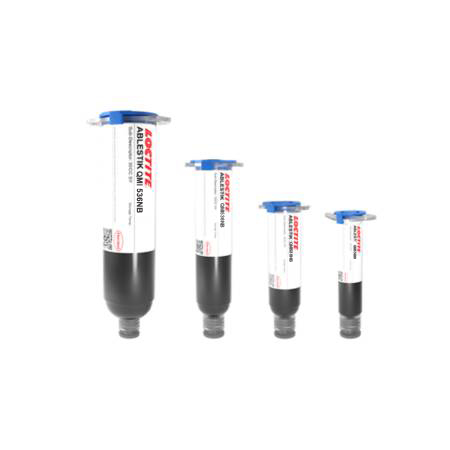LOCTITE ABLESTIK QMI536NB
- Bismaleimide resin
- Low stress
- No-bleed version of QMI536
Product Description
LOCTITE ABLESTIK QMI536NB is a low-bleed, non- conductive, PTFE-filled paste designed for stacked die applications which require very low stress and robust mechanical properties to prevent damaging the top die structure. The material has the same processing and properties of QMI536 but resin bleed is essentially eliminated. These features produce fast cure capability and enhanced reliability performance to a wide variety of surfaces, including solder resist, flexible tape, bare silicon and various die passivations.
LOCTITE ABLESTIK QMI536NB creates packages and devices that have high resistance to delamination and popcorning after multiple exposures to lead-free solder reflow temperatures. It has good optical performance with high transmittance, Optical Density and HRI and is a great solution for ASIC attach and LED attach.
LOCTITE ABLESTIK QMI536NB is a Bismaleimide (BMI) based product. QMI products are typically lower modulus at 25C vs epoxies and therefore lower in strength. They make up for it at higher temps where they are typically higher in strength than epoxies, something very beneficial during reliability testing. At the same time their lower modulus (“flexibility”) is also leading to less stress during temp cycling, temp shock and vibration testing. Because of their high temperature stable and hydrophobic properties, such BMI materials have replaced many epoxy die attach materials when Pb free 260 reflow had to be survived.
LOCTITE ABLESTIK QMI536NB has been developed as a medium modulus (300MPa) and fast curing “No Bleed” dispense paste that is widely used for die attach in automotive sensor and consumer electronics applications. It can be cured at low temperatures down to 80°C and has a Dielectric Constant value of 3. You might also be interested in QMI 538NB that has a lower modulus (100MPa) and is used in MEMS and die stacking from the initial steps.
LOCTITE ABLESTIK QMI536NB has also been used successfully as an encapsulation in MEMS microphones in the past. The ~300 MPa modulus made it an ideal candidate for such an application when cured at 120°C
Cure Schedule
Cure Schedule
- 30 minutes @ 150°C
Technical Specifications
| General Properties | |
| Density (g) | 1.4 g/cm3 |
| Pot Life Pot Life Pot life is the amount of time it takes for the viscosity of a material to double (or quadruple for lower viscosity materials) in room temperature after a material is mixed. It is closely related to work life but it is not application dependent, less precise and more of a general indication of how fast a system is going to cure. | 12 hours |
| Specific Gravity Specific Gravity Specific gravity (SG) is the ratio of the density of a substance to the density of a reference substance; equivalently, it is the ratio of the mass of a substance to the mass of a reference substance for the same given volume. For liquids, the reference substance is almost always water (1), while for gases, it is air (1.18) at room temperature. Specific gravity is unitless. | 1.37 |
| Thermal Properties | |
| Glass Transition Temperature (Tg) Glass Transition Temperature (Tg) The glass transition temperature for organic adhesives is a temperature region where the polymers change from glassy and brittle to soft and rubbery. Increasing the temperature further continues the softening process as the viscosity drops too. Temperatures between the glass transition temperature and below the decomposition point of the adhesive are the best region for bonding. The glass-transition temperature Tg of a material characterizes the range of temperatures over which this glass transition occurs. | -30 °C |
| Specific Heat Capacity Specific Heat Capacity Specific heat capacity is the amount of heat energy required to raise the temperature of a substance per unit of mass. The specific heat capacity of a material is a physical property. It is also an example of an extensive property since its value is proportional to the size of the system being examined. | 1.5 J/(g⋅°C) |
| Thermal Conductivity Thermal Conductivity Thermal conductivity describes the ability of a material to conduct heat. It is required by power packages in order to dissipate heat and maintain stable electrical performance. Thermal conductivity units are [W/(m K)] in the SI system and [Btu/(hr ft °F)] in the Imperial system. | 0.3 W/m.K |
| Chemical Properties | |
| Moisture absorption | 0.35 % |
| Physical Properties | |
| Thixotropic index Thixotropic index Thixotropic Index is a ratio of a material s viscosity at two different speeds in Ambient temperature, generally different by a factor of ten. A thixotropic material s viscosity will decrease as agitation or pressure is increased. It indicates the capability of a material to hold its shape. Mayonnaise is a great example of this. It holds its shape very well, but when a shear stress is applied, the material easily spreads. It helps in choosing a material in accordance to the application, dispense method and viscosity of a material. | 5 |
| Viscosity Viscosity Viscosity is a measurement of a fluid’s resistance to flow. Viscosity is commonly measured in centiPoise (cP). One cP is defined as the viscosity of water and all other viscosities are derived from this base. MPa is another common unit with a 1:1 conversion to cP. A product like honey would have a much higher viscosity -around 10,000 cPs- compared to water. As a result, honey would flow much slower out of a tipped glass than water would. The viscosity of a material can be decreased with an increase in temperature in order to better suit an application | 10,000 mPa.s |
Additional Information
How can we limit bleeding on non traditional finishes?
Bleeding is a complicated topic and very surface finish dependent. QMI 536NB has certain "Anti Bleed Agents", but is optimized to most commonly used lead frame finishes. As QMI 536NB is BMI resin based, it can be SNAP cured as well (comparable to QMI 519 and 550 for instance). In theory, 30sec @ 160°C or 1min @ 120°C should already cure this product for ~90%. It will probably take longer to develop full adhesion and relax the bond line, so a "post cure" bake of around 30min at 150°C would be good to finish full cure (or done during Post Mold Cure). Even few seconds @ 160°C will be sufficient to "gel" the material and stop any further bleed. Note that this is all based on bond line = adhesive temperature, so in oven this would need more time to warm up. This is a practical option to stop/reduce the bleeding of QMI 536NB on non-traditional finishes.
For volume production, die bonder suppliers may be able to fit a heater just after the die placement position. Another thing that might reduce the bleed is to bake the parts immediately before die attach – to make sure that they are dry (30min @ 125°C should be OK).
DMA Modulus of QMI536NB

The DMA Modulus curve shows the modulus of the QMI536NB over the temperature range from -100°C up to 300°C
QMI536NB DSC

Pull strength of Bismaleimide based resins in different temps
It has been observed that BMI based hybrids do not perform well on pull tests. BMI resin based QMI products are typically lower modulus at 25°C vs epoxies and therefore lower in strength. But, and that's the most important point, at higher temps they are typically higher in strength than epoxies, something that benefits high temp operation applications up to 200°C !
This lower modulus (“flexibility”) is also leading to less stress during temp cycling, temp shock and vibration testing.
Since it contains silanes, is this a silicone or an epoxy based resin?
BMI resin based adhesives are Silicone free! Silanes are added in small quantities as adhesion promoter. And to add to that since you're wondering how to classify it, we’re not aware of any BMI/epoxy cross contamination.
What is Optical Density?
Optical density is a logarithmic intensity ratio of the light falling upon the material, to the light transmitted through the material:
Though optical density and absorbance both measure the absorption of light when that light passes through an optical component, these two terms are not the same. Optical density measures the amount of attenuation, or intensity lost, when light passes through an optical component. It also tracks attenuation based on the scattering of light, whereas absorbance considers only the absorption of light within the optical component. Src
It is usual a point of confusion since people sometimes say it is the same as absorbance or define it as absorbance over the length.
QMI538NB
QMI538NB is a lower modulus alternative for MEMS and die stacking from the beginning.




